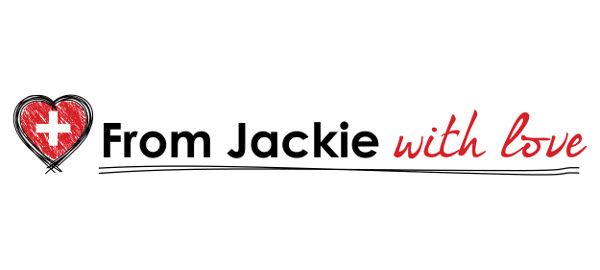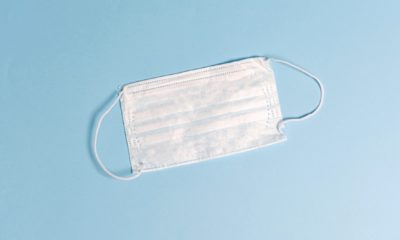Uncategorized
From Jackie with love: Is salt the devil?
Published
8 years agoon
Posted By
Outlaw Partners
By Jackie Rainford Corcoran EBS Health Columnist
The American Heart Association has worked long and hard to educate people on the importance of a low sodium diet. But a 2016 study published in The Lancet, a long-standing medical journal, has shaken things up in the nutrition world.
The study concludes that only people with hypertension who eat a high in sodium diet should be advised to lower their sodium intake. Study authors also say that whether or not you have hypertension, following a low sodium diet increases risk of cardiovascular complications and death.
It’s easy to see how this, like much of the nutritional information we get, can cause confusion. President of the American Heart Association Mark Creager publicly criticized the study with the following statement on AHA’s website: “The link is proven between excess sodium and high blood pressure, and I find it worrisome that adoption of the authors’ recommendations may reverse the progress that has occurred in modifying dietary sodium intake and reducing the risk of high blood pressure and its effect on heart disease and stroke. Today’s widely accepted sodium recommendations are based on well-founded scientific research—and that’s what people should understand.”
Eating too much sodium causes it to accumulate in the body. In order to dilute the excess sodium, the body retains water. This increases the amount of fluid surrounding cells as well as the volume of blood in the bloodstream. Increased blood volume causes the heart to work harder and adds pressure in blood vessels. This extra work can cause blood vessels to stiffen, which can lead to high blood pressure, heart attack and stroke. According the Center for Disease Control, one in every four American deaths is caused by heart disease.
We need salt to stay alive. It’s an essential nutrient. But very little is needed in the diet. It’s estimated that the body needs less than 500 milligrams of sodium per day to perform its functions. One teaspoon of salt contains 2,300 milligrams of sodium. The AHA recommends limiting sodium to 1,500 milligrams with the caveat that people with high blood pressure, diabetes or cardiovascular diseases should consume less. Yet the average American gets more than 3,400 milligrams of sodium per day—more than double the AHA’s generous recommended limit.
So what gives? Why are we eating too much salt? The answer: processed foods. It’s estimated that 10 percent of the salt we eat is naturally present in foods, 15 percent is added during cooking and at the table, and the remaining 75 percent comes from processed foods. Not only does sodium show up in canned foods, processed meats, cheese, salad dressings and packaged snacks, but also in products that we don’t think of as “salty” foods like pasta, bread and cereal.
Sodium provides economic benefits to most companies. It’s used as a preservative, prevents food-borne pathogens from developing, helps bind ingredients and enhances the color of the food. But perhaps most importantly, it improves the taste of processed foods.
I wish the message that the AHA blasted wasn’t so much “eat less sodium” but instead, “eat more fresh fruits and vegetables and less processed foods.” While sodium increases blood pressure, potassium helps relax blood vessels, excrete sodium and decrease blood pressure. Fruits and vegetables are naturally high in potassium and low in sodium. This is where the rubber meets the road. Eat fresh foods that you’ve prepared as often as possible. Adding a bit of salt from the salt shaker goes a long way compared to the sodium mashed into packaged foods.
Jackie Rainford Corcoran is an IIN Certified Holistic Health Coach, culture consultant and public speaker. Contact her at jackie@corehealthmt.com.
The Outlaw Partners is a creative marketing, media and events company based in Big Sky, Montana.


Upcoming Events
november, 2024
Event Type :
All
All
Arts
Education
Music
Other
Sports
Event Details
Spanish Classes with World Language InitiativeThese unique, no cost Spanish classes are made possible by the contribution of Yellowstone Club
more
Event Details
Spanish Classes with World Language InitiativeThese unique, no cost Spanish classes are made possible by the contribution of Yellowstone Club Community Foundation (YCCF) and Moonlight Community Foundation (MCF). This class will focus on building a lifelong affinity for world languages and cultures through dynamic and immersive Communicative Language teaching models.
Beginner Class – Mondays and Wednesdays from 5:30-6:30 pm
Intermediate Class – Mondays and Wednesdays from 6:45- 7:45 pm
- Classes begin Oct.7, 2024 and run for 6 weeks
- Class size is limited to 12 students
- Classes are held in Big Sky at the Big Sky Medical Center in the Community Room
For more information or to register follow the link below or at info@wlimt.org.
Time
October 21 (Monday) 5:30 pm - November 27 (Wednesday) 7:45 pm
Location
Big Sky Medical Center - Community Room (2nd Floor)
Big Sky Medical Center - Community Room (2nd Floor)
Event Details
Spanish Classes with World Language InitiativeThese unique, no cost Spanish classes are made possible by the contribution of Yellowstone Club
more
Event Details
Spanish Classes with World Language InitiativeThese unique, no cost Spanish classes are made possible by the contribution of Yellowstone Club Community Foundation (YCCF) and Moonlight Community Foundation (MCF). This class will focus on building a lifelong affinity for world languages and cultures through dynamic and immersive Communicative Language teaching models.
Beginner Class – Mondays and Wednesdays from 5:30-6:30 pm
Intermediate Class – Mondays and Wednesdays from 6:45- 7:45 pm
- Classes begin Oct.7, 2024 and run for 6 weeks
- Class size is limited to 12 students
- Classes are held in Big Sky at the Big Sky Medical Center in the Community Room
For more information or to register follow the link below or at info@wlimt.org.
Time
October 28 (Monday) 5:30 pm - December 4 (Wednesday) 7:45 pm
Location
Big Sky Medical Center - Community Room (2nd Floor)
Big Sky Medical Center - Community Room (2nd Floor)
Event Details
Spanish Classes with World Language InitiativeThese unique, no cost Spanish classes are made possible by the contribution of Yellowstone Club
more
Event Details
Spanish Classes with World Language InitiativeThese unique, no cost Spanish classes are made possible by the contribution of Yellowstone Club Community Foundation (YCCF) and Moonlight Community Foundation (MCF). This class will focus on building a lifelong affinity for world languages and cultures through dynamic and immersive Communicative Language teaching models.
Beginner Class – Mondays and Wednesdays from 5:30-6:30 pm
Intermediate Class – Mondays and Wednesdays from 6:45- 7:45 pm
- Classes begin Oct.7, 2024 and run for 6 weeks
- Class size is limited to 12 students
- Classes are held in Big Sky at the Big Sky Medical Center in the Community Room
For more information or to register follow the link below or at info@wlimt.org.
Time
November 4 (Monday) 5:30 pm - December 11 (Wednesday) 7:45 pm
Location
Big Sky Medical Center - Community Room (2nd Floor)
Big Sky Medical Center - Community Room (2nd Floor)









